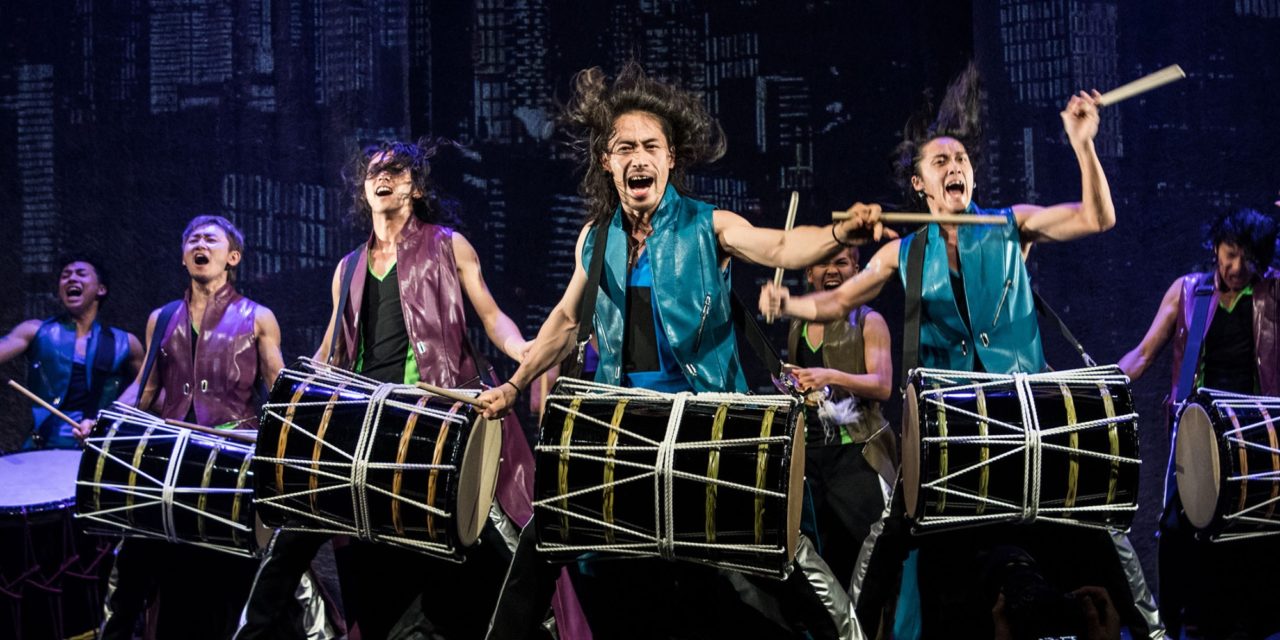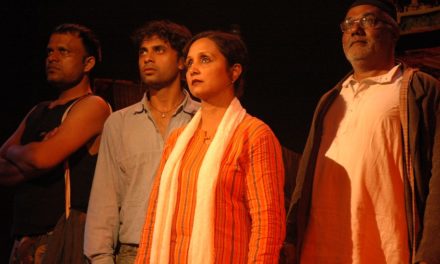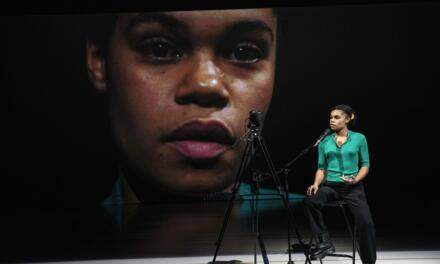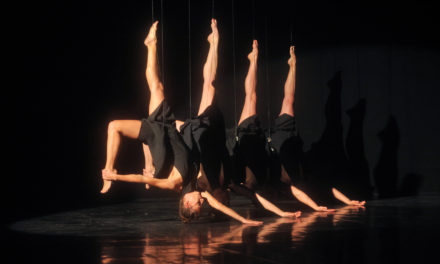Based in mountainous Oita Prefecture in northeastern Kyushu, the privately owned and run Drum Tao company has barely paused from pounding away at the international entertainment market since it launched its overseas ambitions with a sold-out run at the Edinburgh Fringe in 2004.
Since then, the troupe of wadaiko (traditional Japanese drum) performers has taken what it calls its “rhythm of tribe” to more than 500 cities across 26 countries—including seven tours of Germany, six of the United States (with one off-Broadway run) and others to Singapore, China, Kazakhstan, and the Philippines—along the way, playing to an astonishing 8 million people.
To tap into the energy driving this phenomenon, I visited the Alternative Theatre in Tokyo’s central Yurakucho neighborhood where Tao opened its latest show, Mangekyo (Kaleidoscope), in May this year.
There, Tao’s president and artistic director, Ikuo Fujitaka (aka Franco Drao), made time to talk frankly about the group’s success strategy and its new Jiku Ryokoki (Travel Book Of Space-Time) show, which premieres in Tokyo on July 19.
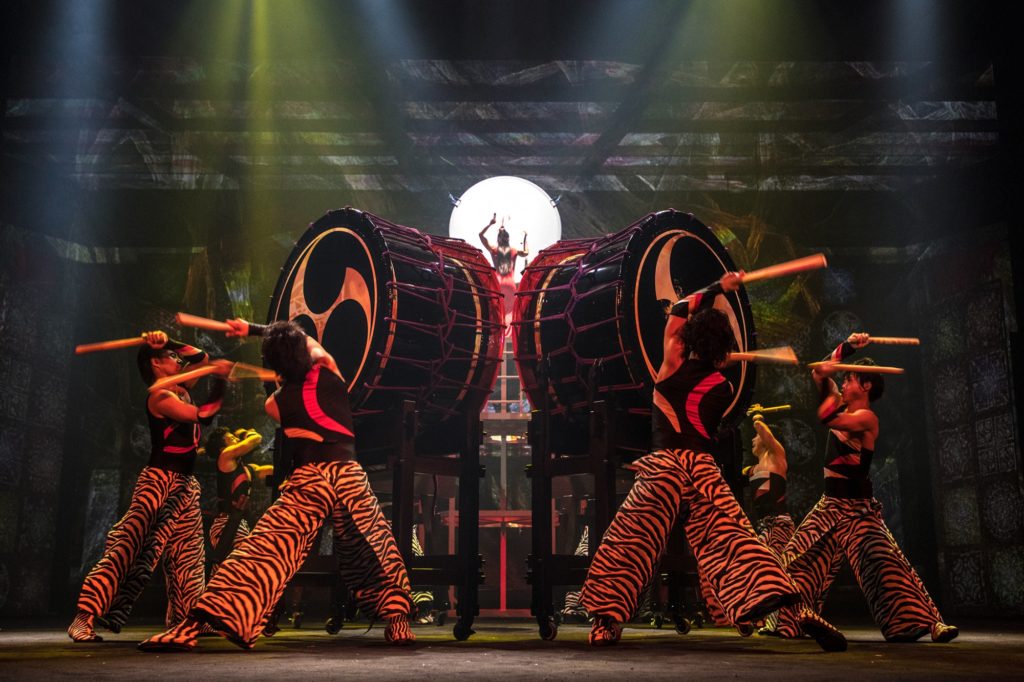
Looking ahead: Appealing to overseas audiences, creating viable career options in the field of art and building its own drum culture are just some of the tasks Drum Tao has set for itself. | © DRUM TAO
We begin by discussing a November 2017 report showing that many of the projects funded in the government’s Cool Japan campaign—a 2010 strategy to enhance economic growth by promoting areas of culture such as manga, anime, gaming, food, fashion, traditional performing arts, and J-pop—had failed to even approach their revenue targets. Not only that, but the theater industry in Japan saw hardly any financial support from Cool Japan and has concentrated even more since then on domestic demand.
So why is Tao doing so well at home and worldwide, when there’s little to show for that much-vaunted Cool Japan initiative?
“Though Cool Japan was meant to follow the lead of South Korea’s government in fostering its now booming worldwide entertainment industry,” Fujitaka, 59, explains, “most theater producers and administrators here unfortunately don’t have the know-how to appeal to foreign customers or develop international markets. So they just grabbed the Cool Japan crumbs on offer without having any strategy as to how to grow their business or appeal to foreign customers.
“In contrast, we’re doing well without receiving any government subsidies, and JTB (Japan Travel Bureau) recently singled out Kaleidoscope as an entertaining show that’s especially appealing to the growing number of foreign visitors.”
Currently, Tao has 45 performers split into three divisions. One group mainly tours in Japan and overseas, while another works on Kaleidoscope, and the third concentrates on developing a permanent wadaiko-themed village and culture at their home base in Oita.
However, this relatively new startup only began by chance when Fujitaka—who worked in sales at a department store and then a trading company—went to see a show put on by his boss’s amateur wadaiko troupe. The experience amazed him so much that he soon quit his job to work toward his dream of taking wadaiko to what he calls “the world’s entertainment hub”—a stage in Las Vegas.
Fujitaka actually founded Drum Tao in 1993 in Komaki, Aichi Prefecture, before moving to Oita two years later, from where its popularity spread rapidly across Kyushu before going nationwide en route to the wider world.
“I never had a problem selling all the tickets because I had tremendous confidence in my capability, and in the early days I sold ¥100 million by myself. After all, I had lots of experience selling all kinds of dubious, useless things when I was a salaryman, so it was a piece of cake,” he says with a laugh.
“My other priority from the start was to provide an appropriate environment for our members, as they would need to devote themselves to drum training and creating shows without having to worry about their daily lives,” he continues. “So I paid them salaries from the beginning and we lived together on a large site we named Tao Village in Aso Kuju National Park in Oita. I figured those conditions would be best for the production of memorable, high-quality works.”
In contrast to this, Fujitaka says, there is still a tendency in Japan to regard performers, actors, and artists as necessary complications in the main process of making money.
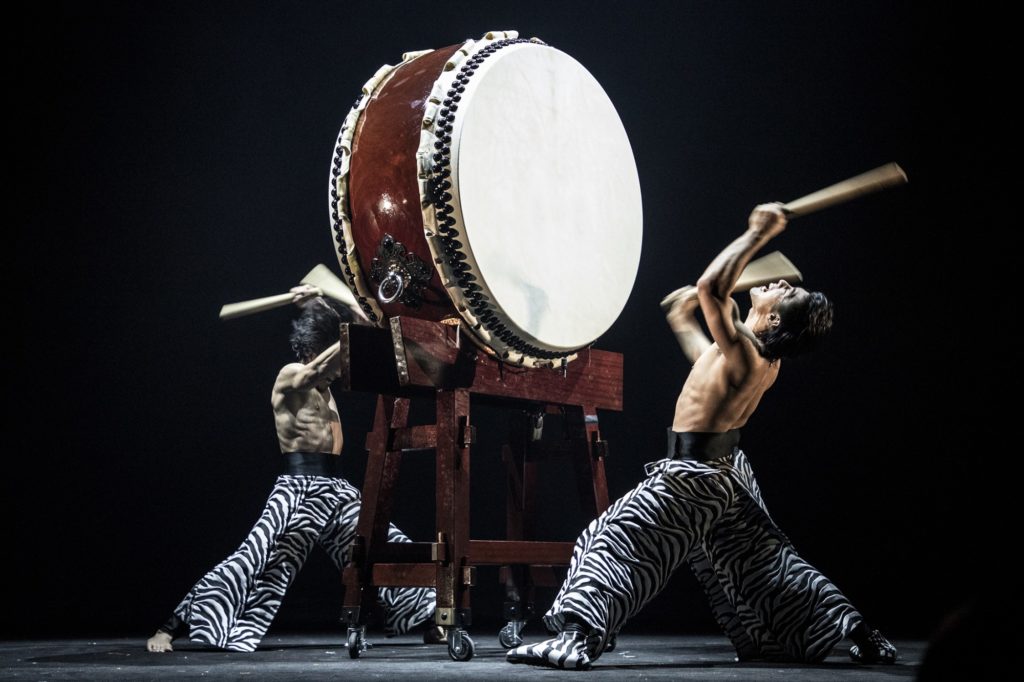
Fighting fit: Japanese drumming is physically demanding and often involves the performers’ entire bodies. | © DRUM TAO
“Parents here want their children to join a big corporation to get a stable salary rather than dream about being artists,” he says. “Consequently, many of them never get to live their own life ambitions as they’re swallowed up in society.
“This reflects in the poor condition of today’s art sector in Japan, and I’m striving to overturn such old ideas by making it a realistic career option for children to join Tao.”
As he finishes speaking we are fleetingly joined by the other key person in the company, its 39-year-old chairwoman, Arisa Nishi, who says that the company’s unity is its strong point.
“Tao is expanding year by year, so my most important role is to be a firm consensus builder in the team. If I have enough time, I always like to call other members working at different sites every day to chat about their situation,” she says before heading off again.
The latest iteration of that dream being built by the Tao team is Jiku Ryokoki, which Fujitaka says he directed with the aim of creating a magnificent motion-picture world—on the live stage—using high-tech visual images, computerized digital sound, and several sizes of drums along with musicians playing flutes, koto, and shamisen.
With its original scenario written by top producer Naoki Tachikawa, and the internationally acclaimed fashion designer, and regular Tao collaborator, Junko Koshino, creating the eye-catching leather and stylish black-and-white costumes, the show’s storyline revolves around a group of tough young guys who journey across time and space in search of the sound of Japan.
So, as showy drummers drive the action and raging waves are apt to appear projected in the background, don’t be surprised if a kabuki actor animation character comes alive off the screen and joins the drummers.
As Fujitaka put it by way of signing off,
“I want to always produce innovative shows. So if the time comes when I have no ideas in my head, then I’ll pass my baton to the next generation.”
That way, he believes, Franco Drao’s dream will spring up again and again as Tao shares its “rhythm of tribe” with the world.
Jiku Ryokoki (Travel Book of Space-Time) runs July 19-27 at Toyosu Pit in Tokyo and then tours Japan till Dec. 26. For details, call Sunrise Promotion at 0570-00-3337 or visit www.drum-tao.com.
This article originally appeared in Japan Times on July 18, 2018, and has been reposted with permission.
This post was written by the author in their personal capacity.The opinions expressed in this article are the author’s own and do not reflect the view of The Theatre Times, their staff or collaborators.
This post was written by Nobuko Tanaka.
The views expressed here belong to the author and do not necessarily reflect our views and opinions.

